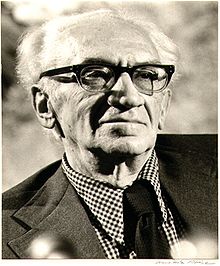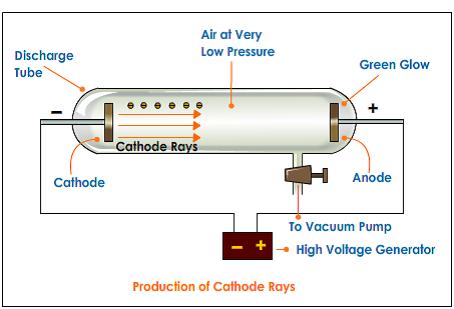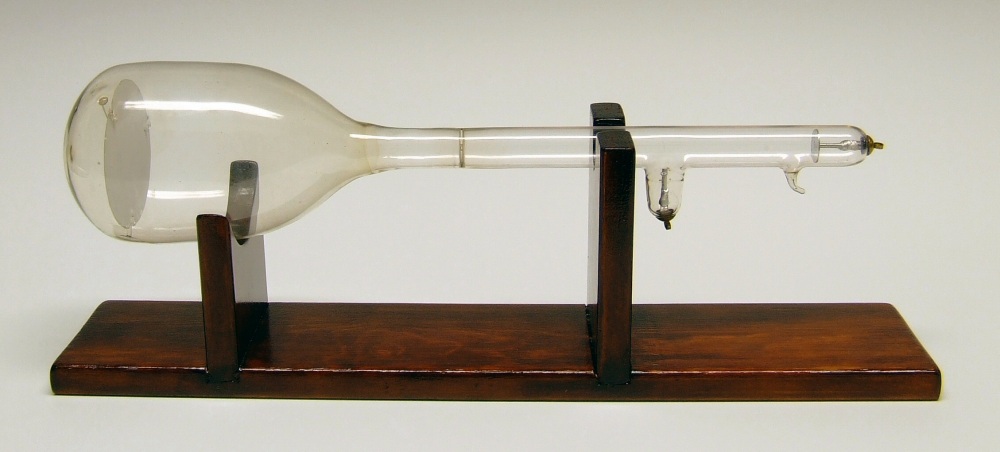all
 The Electron and Cathode Rays – things rarely pondered
The Electron and Cathode Rays – things rarely pondered
“No man really becomes a fool until he stops asking questions”. – Charles Proteus Steinmetz – See Electron 2

Albert Einstein: “I have now struggled with this basic problem of electricity for more than twenty years, and have become quite discouraged, though without being able to let go of it. I am convinced that a completely new and enlightening inspiration is needed.” Albert Einstein explaining why physicists don’t like electricity and why astronomers call cosmic electricity magnetic fields. There is no “completely new and enlightening inspiration” because it was all pseudo-debunked to make way for particle physics over a hundred years ago.
There is a history of science and technology that never sees the light of day and part of that history is an electrical golden age that ended at a time corresponding with the discovery of the electron, Einstein’s theories and particle physics – such things became permanently embedded within the scientific consensus during the 1930’s. This may seem to be paradoxical but the evidence is here for all to see on this and other pages.

The Electric Universe denied
Few commentators discuss or are even aware of the profound, but unintended negative effect that Immanuel Velikovsky had on the science of astrophysics. His ‘Electric Universe’ has since become an alternative science cottage industry in it’s own right as a direct result of neglect by the mainstream. Scientists are prepared to make the most outlandish and illogical statements about the electrical nature of space rather than admit that he had something worthy of study regarding cosmic electricity. There are further serious doubts about the electron, cathode rays and the research that led to the “discovery of the electron”, not to mention doubts about the stuff we read in textbooks. The history of electrical research is a taboo subject in academic scientific circles! Those who have a genuine interest in putting the record straight would do well to read Eric P Dollard : eric_dollard introduction-to-dielectric-magnetic-discharges-in-electrical-windings-new-and-remade

The Cathode Ray Tube (CRT)
The original cathode ray tube of Michael Faraday and others (right) was a tube with a cathode at one end and an anode at the other following faithfully the basic ideas of electronics giving a simple circuit of minus to plus. The electrons (we are told) enter the tube through the cathode and proceed to the anode and then back to the electrical source … Ta Dah! we have an electrical circuit. But it doesn’t always work like that!
CRT Anode Strangeness
As people like William Crookes and J.J. Thomson experimented with cathode rays they moved the anode to various places on the tube, unlike the straightforward Faraday tube above. If we Google some graphics we find that in some the anode is to the side in its own extended tube (see below). Any flow of particles/rays/electrons would need to bend into it to form a circuit. Remember, we are speaking of cathode rays that we are told move in a straight line. In another the anode is close to the cathode with a hole in it’s centre to allow the cathode rays to pass through it. (There is no discussion about all of this that I’ve been able to find) The main feature in Thomson’s experiments was the deflection of the cathode rays, but it is never mentioned that the strongest attraction (If we are dealing with electrons) should rightly come from the anode. But looking at the experiments there seems to be little or no attraction of the negative cathode rays toward the positive anode. This is what intrigues me.

We are told that cathode rays move in a straight line. So what is it that is curving into the anode tube? It should be the electrons but cathode rays are electrons and they are not supposed to go around corners?



Cathode Ray Deflection
Thomson (and others in a true history) had to insert two charged plates within the tube, with a positive and negative charge, in order to deflect the rays. https://en.wikibooks.org/wiki/High_School_Chemistry/Further_Understanding_of_the_Atom
I would love to hear a plausible explanation as to why this setup so easily deflects cathode rays with a lower voltage and the high voltage anode, marked with a plus below does not do so.


JJ Thomson was unsure as to what the cathode rays were and assumed that they were as a result of the tenuous gas left in the tube after evacuation. But later when vacuum tube diodes and triodes began to be manufactured it was found that they were more efficient with a hard vacuum and so it was not Thomson’s gas.
The only logical answer to the questions posed above is that there are two different types of electricity flowing in a cathode ray tube and that electrons as we know them do not exist.
Electrons?
Another question is where do the electrons come from? We are told by Wiki that electrons move very slowly if at all: “Free electrons in a conductor follow a random path. Without the presence of an electric field, the electrons have no net velocity. When a DC voltage is applied, the electron drift velocity will increase in speed proportionally to the strength of the electric field. The drift velocity is on the order of millimeters per hour. AC voltages cause no net movement; the electrons oscillate back and forth in response to the alternating electric field over a distance of a few micrometers…”
https://en.wikipedia.org/wiki/Speed_of_electricity#Electric_drift
So why does not the cathode become depleted of electrons? The theory of ‘push electrons’ (below) becomes untenable when we consider that a current can flow in both directions at the same time in the same conductor.
allaboutcircuits.com says: “A noteworthy observation may be made here. As each electron moves uniformly through a conductor, it pushes on the one ahead of it, such that all the electrons move together as a group. The starting and stopping of electron flow through the length of a conductive path is virtually instantaneous from one end of a conductor to the other, even though the motion of each electron may be very slow. An approximate analogy is that of a tube filled end-to-end with marbles:
allaboutcircuits.com: “The tube is full of marbles, just as a conductor is full of free electrons ready to be moved by an outside influence. If a single marble is suddenly inserted into this full tube on the left-hand side, another marble will immediately try to exit the tube on the right. Even though each marble only traveled a short distance, the transfer of motion through the tube is virtually instantaneous from the left end to the right end, no matter how long the tube is. With electricity, the overall effect from one end of a conductor to the other happens at the speed of light: a swift 186,000 miles per second!!! Each individual electron, though, travels through the conductor at a much slower pace.”
There is absolutely no evidence that electrons are close enough to behave in this way let alone in a straight line pushing each other. The next diagram says something different. This circuit cannot be a tube of marbles as the marbles would be moving in opposite directions at the same time. Impossible!:

There is a video here that shows this happening

Nikola Tesla shorted out his power supply (below) and still managed to have a current of *something* flowing into his coils as shown at “output” below.

Several experimenters of Tesla’s day and some more recent have discovered all of this and they call it cold electricity.
See: The Free Energy Secrets of Cold Electricity by Peter A. Lindemann, D.Sc.
All of this is of course completely ignored by mainstream science and true to form it chose the particle physics route. Science likes particles and the electron became the first of many giving birth to the science of particle physics. The electron most probably does not exist, but particle accelerators continue to find ever smaller enigmatic particle results that will contribute nothing to the sum of useful or usable knowledge. There will never be, and there has never been, any usable or generally useful technology arising from particle physics. A challenge to the reader to find one – on sale – in the shops! Find one and make me foolish!
Electronics
It must also be noted at this point that a basic version of all of todays electronics was available at the time the electron discovery took place. Had this not been the case JJ Thomson could not have carried-out his experiments. All of the circuitry and the electronic components we have today were present in a basic form. Even the transistor was documented around 1910. Notwithstanding the original circuits worked perfectly well with transistors as they did with the original components. This is the paradox mentioned at the start of this page: The golden age of electronic discovery ended with the introduction of the electron.
“To the electron — may it never be of any use to anybody.” — JJ. Thomson’s favorite toast
It may come as a surprise to some but Thomson was well aware of all of the above, hence the quote. He was a firm supporter of the aether theory and his research was along the same lines as Nikola Tesla and Charles Steinmetz. Steinmetz is documented as saying that the electron is a childish idea and Tesla said it did not exist.

From the late Eugene Mallove:
In an elaborate series of experiments with Tesla coils, employing a host of different thermal and electric sensing apparatus (mercury thermometers, electroscopes, GM counters, oscilloscopes, neon bulb indicators within circuitry, Faraday cages, and plate antennas) at different ranges from the coil tips, and using comparison energy sources (various ion generators and radioactive sources), the Correas were able to rule out what Tesla coil radiation is not, and to synthesize what it may well be. They conclude that Tesla coils emit a special form of massfree radiation that is not electromagnetic in character and not sourced in ionic emissions. They observed that these “Tesla waves alone were capable of triggering the ratemeter via the plate antenna even at substantial distances.” They suggest that the pulsed input to the primary of the Tesla coil “induces in the space of the closely coupled secondary a conversion of the local aether energy to electric form.” They write,
“All happens as if these coils synthesized two different kinds of electric fields, one proximal [near the coil] and massbound, and the other massfree and responsible for all distal [distant from the coil] effects.”
At root, these experiments touch on the deep issue of the aether and its relation to what are evidently two basic forms of electricity, the accepted form (massbound, the flow of electrons), and other not accepted at all by conventional science, massfree—capable of flowing in and around wires, as well as being transmitted as Tesla waves through gas media and vacuum.
The massfree form of electricity might be called “cold electricity.” This hearkens back to another fundamental issue, the very nature of some non-standard biological energies, which are also presumed not to exist and the subject of much mockery these day.
Read it all here: http://aetherforce.com/tesla-the-aether-by-eugene-mallove/
